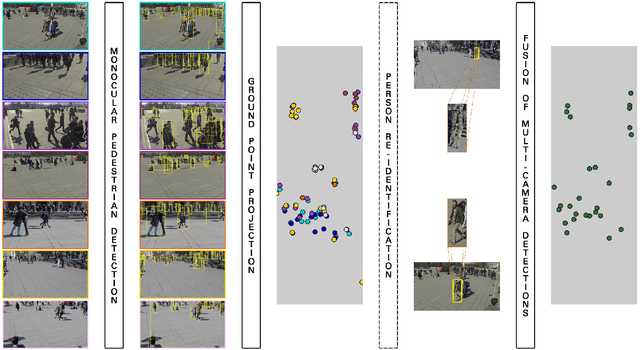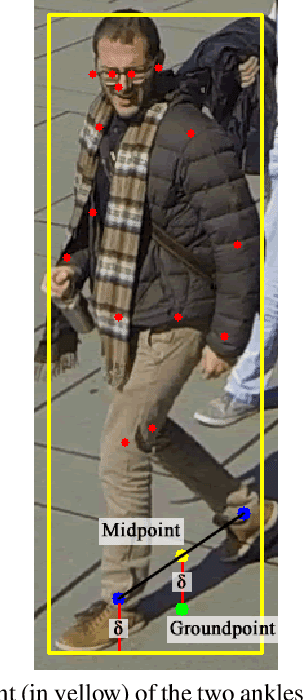João Paulo Lima
Toward unlabeled multi-view 3D pedestrian detection by generalizable AI: techniques and performance analysis
Aug 08, 2023Abstract:We unveil how generalizable AI can be used to improve multi-view 3D pedestrian detection in unlabeled target scenes. One way to increase generalization to new scenes is to automatically label target data, which can then be used for training a detector model. In this context, we investigate two approaches for automatically labeling target data: pseudo-labeling using a supervised detector and automatic labeling using an untrained detector (that can be applied out of the box without any training). We adopt a training framework for optimizing detector models using automatic labeling procedures. This framework encompasses different training sets/modes and multi-round automatic labeling strategies. We conduct our analyses on the publicly-available WILDTRACK and MultiviewX datasets. We show that, by using the automatic labeling approach based on an untrained detector, we can obtain superior results than directly using the untrained detector or a detector trained with an existing labeled source dataset. It achieved a MODA about 4% and 1% better than the best existing unlabeled method when using WILDTRACK and MultiviewX as target datasets, respectively.
Generalizable Multi-Camera 3D Pedestrian Detection
Apr 12, 2021



Abstract:We present a multi-camera 3D pedestrian detection method that does not need to train using data from the target scene. We estimate pedestrian location on the ground plane using a novel heuristic based on human body poses and person's bounding boxes from an off-the-shelf monocular detector. We then project these locations onto the world ground plane and fuse them with a new formulation of a clique cover problem. We also propose an optional step for exploiting pedestrian appearance during fusion by using a domain-generalizable person re-identification model. We evaluated the proposed approach on the challenging WILDTRACK dataset. It obtained a MODA of 0.569 and an F-score of 0.78, superior to state-of-the-art generalizable detection techniques.
 Add to Chrome
Add to Chrome Add to Firefox
Add to Firefox Add to Edge
Add to Edge